| Listing 1 - 10 of 16 | << page >> |
Sort by
|
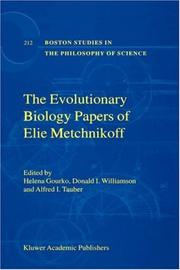
ISBN: 0792360672 9048153565 9401593817 Year: 2000 Volume: 212 Publisher: Dordrecht ; Boston ; London Kluwer
Abstract | Keywords | Export | Availability | Bookmark
 Loading...
Loading...Choose an application
- Reference Manager
- EndNote
- RefWorks (Direct export to RefWorks)
Elie Metchnikoff (1845-1916), winner of the Nobel Prize in 1907 for his contributions to immunology, was first a comparative zoologist, who, working in the wake of Darwin's On the Origin of Species, made seminal contributions to evolutionary biology. His work in comparative embryology is best known in regard to the debates with Ernst Haeckel concerning animal genealogical relationships and the theoretical origins of metazoans. But independent of those polemics, Metchnikoff developed his `phagocytosis theory' of immunity as a result of his early comparative embryology research, and only in examining the full breadth of his work do we appreciate his signal originality. Metchnikoff's scientific papers have remained largely untranslated into English. Assembled here, annotated and edited, are the key evolutionary biology papers dating from Metchnikoff's earliest writings (1865) to the texts of his mature period of the 1890s, which will serve as an invaluable resource for those interested in the historical development of evolutionary biology.
Animal evolution --- Animals--Evolution --- Animaux--Evolution --- Biological evolution --- Biologische evolutie --- Darwinism --- Darwinisme --- Dieren--Evolutie --- Evolutie (Biologie) --- Evolution (Biologie) --- Evolution (Biology) --- Evolution biologique --- Origin of species --- Animals --- Evolutionary biology --- Evolutionary science --- Biology --- Evolution --- Biological fitness --- Homoplasy --- Natural selection --- Phylogeny --- Evolution (Biology). --- History. --- Evolutionary biology. --- Animal anatomy. --- History, general. --- Evolutionary Biology. --- Animal Anatomy / Morphology / Histology. --- Animal anatomy --- Physiology --- Annals --- Auxiliary sciences of history --- Anatomy
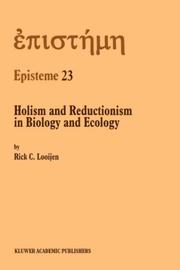
ISBN: 0792360761 9048153646 9401595607 Year: 2000 Volume: 23 Publisher: Dordrecht Kluwer
Abstract | Keywords | Export | Availability | Bookmark
 Loading...
Loading...Choose an application
- Reference Manager
- EndNote
- RefWorks (Direct export to RefWorks)
Holism and reductionism are traditionally seen as incompatible views or approaches to nature. Here Looijen argues that they should rather be seen as mutually dependent and hence co-operating research programmes. He sheds some interesting new light on the emergence thesis, its relation to the reduction thesis, and on the role and status of functional explanations in biology. He discusses several examples of reduction in both biology and ecology, showing the mutual dependence of holistic and reductionist research programmes. Ecologists are offered separate chapters, clarifying some major, yet highly and controversial ecological concepts, such as `community', `habitat', and `niche'. The book is the first in-depth study of the philosophy of ecology. Readership: Specialists in the philosophy of science, especially the philosophy of biology, biologists and ecologists interested in the philosophy of their discipline. Also of interest to other scientists concerned with the holism-reductionism issue.
Biology --- Philosophy of science --- Holism --- Holisme --- Reductionism --- Reductionisme --- Reductionnisme --- Wholism --- -Ecology --- -Holism --- Philosophy --- Evolution --- Whole and parts (Philosophy) --- Balance of nature --- Bionomics --- Ecological processes --- Ecological science --- Ecological sciences --- Environment --- Environmental biology --- Oecology --- Environmental sciences --- Population biology --- Life sciences --- Biomass --- Life (Biology) --- Natural history --- Ecology --- Holism. --- Reductionism. --- Philosophy. --- Vitalism --- Ecophilosophy --- Biology—Philosophy. --- Philosophy and science. --- Evolutionary biology. --- Plant ecology. --- Ecology . --- Philosophy of Biology. --- Philosophy of Science. --- Evolutionary Biology. --- Plant Ecology. --- Ecology. --- Botany --- Phytoecology --- Plants --- Vegetation ecology --- Animal evolution --- Animals --- Biological evolution --- Darwinism --- Evolutionary biology --- Evolutionary science --- Origin of species --- Biological fitness --- Homoplasy --- Natural selection --- Phylogeny --- Science and philosophy --- Science --- Floristic ecology
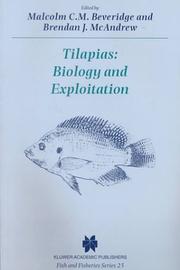
ISBN: 0792363914 041280090X 9401140081 9780412800900 9780792363910 Year: 2000 Volume: 25 Publisher: Dordrecht : Kluwer,
Abstract | Keywords | Export | Availability | Bookmark
 Loading...
Loading...Choose an application
- Reference Manager
- EndNote
- RefWorks (Direct export to RefWorks)
Referred to in the Bible, pictured on the wall-friezes of ancient Egyptian tombs, and a subject of fascination for generations of scientists, the tilapias (Cichlidae: Tilapiini) have featured in the diet and culture of humankind for thousands of years. The present century has seen their spread from Africa throughout the tropics and sub-tropics, largely for food and fisheries purposes. This book attempts to pull together our knowledge of this important group - their biology and fisheries and aquaculture - in a single volume, something that has not been done comprehensively for nearly two decades. A succession of chapters by acknowledged authorities covers evolution, phylogenetic relationships and biogeography, reproductive biology, mating systems and parental care, diet, feeding and digestive physiology, environmental physiology and energetics, the role of tilapias in ecosystems, population dynamics and management, genetics, seed production, nutrition, farming, economics and marketing. The book is aimed at biologists, fisheries scientists, aquaculturists, and all interested in aquatic ecology.
Tilapia. --- Fish-culture. --- Zoology and Animal Sciences. Aquaculture and Fisheries --- Aquaculture and Fisheries (General) --- Life sciences. --- Animal ecology. --- Aquatic ecology. --- Evolutionary biology. --- Animal physiology. --- Life Sciences. --- Animal Ecology. --- Animal Physiology. --- Animal Systematics/Taxonomy/Biogeography. --- Freshwater & Marine Ecology. --- Evolutionary Biology. --- Aquaculture and Fisheries (General). --- Animal systematics. --- Animal taxonomy. --- Aquatic ecology . --- Animal evolution --- Animals --- Biological evolution --- Darwinism --- Evolutionary biology --- Evolutionary science --- Origin of species --- Biology --- Evolution --- Biological fitness --- Homoplasy --- Natural selection --- Phylogeny --- Aquatic biology --- Ecology --- Animal classification --- Animal systematics --- Animal taxonomy --- Classification --- Systematic zoology --- Systematics (Zoology) --- Taxonomy, Animal --- Zoological classification --- Zoological systematics --- Zoological taxonomy --- Zoology --- Animal physiology --- Anatomy --- Physiology
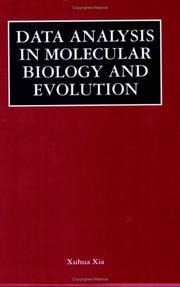
ISBN: 1280043555 9786610043552 030646893X 0792375009 0792377672 Year: 2000 Publisher: Boston, Mass. ; London : Kluwer Academic,
Abstract | Keywords | Export | Availability | Bookmark
 Loading...
Loading...Choose an application
- Reference Manager
- EndNote
- RefWorks (Direct export to RefWorks)
Data Analysis in Molecular Biology and Evolution introduces biologists to DAMBE, a proprietary, user-friendly computer program for molecular data analysis. The unique combination of this book and software will allow biologists not only to understand the rationale behind a variety of computational tools in molecular biology and evolution, but also to gain instant access to these tools for use in their laboratories. Data Analysis in Molecular Biology and Evolution serves as an excellent resource for advanced level undergraduates or graduates as well as for professionals working in the field.
Life sciences. --- Computer science. --- Data structures (Computer science). --- Biochemistry. --- Evolutionary biology. --- Animal anatomy. --- Life Sciences. --- Animal Anatomy / Morphology / Histology. --- Computer Science, general. --- Evolutionary Biology. --- Data Structures. --- Biochemistry, general. --- Morphology (Animals). --- Evolution (Biology). --- Data structures (Computer scienc. --- Data structures (Computer science) --- Biological chemistry --- Chemical composition of organisms --- Organisms --- Physiological chemistry --- Biology --- Chemistry --- Medical sciences --- Information structures (Computer science) --- Structures, Data (Computer science) --- Structures, Information (Computer science) --- Electronic data processing --- File organization (Computer science) --- Abstract data types (Computer science) --- Animal evolution --- Animals --- Biological evolution --- Darwinism --- Evolutionary biology --- Evolutionary science --- Origin of species --- Evolution --- Biological fitness --- Homoplasy --- Natural selection --- Phylogeny --- Informatics --- Science --- Animal anatomy --- Physiology --- Composition --- Anatomy --- Molecular biology --- Evolution (Biology) --- Data processing --- Data processing.
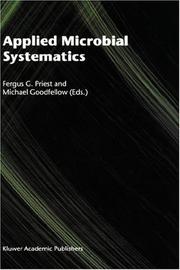
ISBN: 0792365186 0412716607 9401140200 Year: 2000 Publisher: Dordrecht Boston : Kluwer,
Abstract | Keywords | Export | Availability | Bookmark
 Loading...
Loading...Choose an application
- Reference Manager
- EndNote
- RefWorks (Direct export to RefWorks)
Modern approaches to microbial classification and identification, particularly those based on nucleic acid analysis, have raised the awareness and interest of microbiologists in systematics during the past decade. The extended scope of the subject has revolutionized microbial ecology with the demonstration of uncultivable microorganisms as a major component of the biosphere and evolution, with the ribosomal RNA phylogenetic tree as the basis of current classifications. However, advances in microbial systematics have also had enormous impact on other, diverse aspects of microbiology such as animal pathogenicity, plant-microbe interactions and relationships with food. In this book, we survey and discuss in depth the contribution of modern taxonomic approaches to our understanding of the microbiology of these various systems. The book does not concentrate on methods - these have been well reported elsewhere - instead it provides a unique insight into the application and value of modern systematics in diverse branches of microbiology. It will be of value to microbiologists at both research and technical levels who need to appreciate the range of organisms with which they work and the diversity within them. It will also be of value to teachers and students of microbiology courses who want to understand how systematics can enhance microbiology beyond the routine of classification, nomenclature, and identification.
Microbiology --- Classification. --- Evolutionary biology. --- Medical microbiology. --- Microbiology. --- Soil science. --- Soil conservation. --- Plant science. --- Botany. --- Animal anatomy. --- Evolutionary Biology. --- Medical Microbiology. --- Soil Science & Conservation. --- Plant Sciences. --- Animal Anatomy / Morphology / Histology. --- Animal anatomy --- Animals --- Biology --- Physiology --- Botanical science --- Phytobiology --- Phytography --- Phytology --- Plant biology --- Plant science --- Natural history --- Plants --- Conservation of soil --- Erosion control, Soil --- Soil erosion --- Soil erosion control --- Soils --- Agricultural conservation --- Soil management --- Pedology (Soil science) --- Agriculture --- Earth sciences --- Microbial biology --- Microorganisms --- Animal evolution --- Biological evolution --- Darwinism --- Evolutionary biology --- Evolutionary science --- Origin of species --- Evolution --- Biological fitness --- Homoplasy --- Natural selection --- Phylogeny --- Anatomy --- Control --- Prevention --- Conservation --- Floristic botany
Book
ISBN: 9786613062031 1283062038 0822380668 Year: 2000 Publisher: [Durham, N.C.] : Duke University Press,
Abstract | Keywords | Export | Availability | Bookmark
 Loading...
Loading...Choose an application
- Reference Manager
- EndNote
- RefWorks (Direct export to RefWorks)
The Ontogeny of Information is a critical intervention into the ongoing and perpetually troubling nature-nurture debates surrounding human development. Originally published in 1985, this was a foundational text in what is now the substantial field of developmental systems theory. In this revised edition Susan Oyama argues compellingly that nature and nurture are not alternative influences on human development but, rather, developmental products and the developmental processes that produce them.Information, says Oyama, is thought to reside in molecules, cells, tissues, and the environment. When something wondrous occurs in the world, we tend to question whether the information guiding the transformation was pre-encoded in the organism or installed through experience or instruction. Oyama looks beyond this either-or question to focus on the history of such developments. She shows that what developmental “information” does depends on what is already in place and what alternatives are available. She terms this process “constructive interactionism,” whereby each combination of genes and environmental influences simultaneously interacts to produce a unique result. Ontogeny, then, is the result of dynamic and complex interactions in multileveled developmental systems.The Ontogeny of Information challenges specialists in the fields of developmental biology, philosophy of biology, psychology, and sociology, and even nonspecialists, to reexamine the existing nature-nurture dichotomy as it relates to the history and formation of organisms.
Information theory in biology. --- Evolution (Biology) --- Animal evolution --- Animals --- Biological evolution --- Darwinism --- Evolutionary biology --- Evolutionary science --- Origin of species --- Biology --- Evolution --- Biological fitness --- Homoplasy --- Natural selection --- Phylogeny --- Biomathematics --- Information theory: biology. --- Evolution: biology.
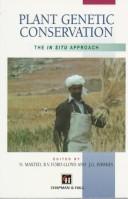
ISBN: 0412634007 0412637308 9400914377 Year: 2000 Publisher: Dordrecht Kluwer
Abstract | Keywords | Export | Availability | Bookmark
 Loading...
Loading...Choose an application
- Reference Manager
- EndNote
- RefWorks (Direct export to RefWorks)
The recent development of ideas on biodiversity conservation was already being considered almost three-quarters of a century ago for crop plants and the wild species related to them, by the Russian geneticist N.!. Vavilov. He was undoubtedly the first scientist to understand the impor tance for humankind of conserving for utilization the genetic diversity of our ancient crop plants and their wild relatives from their centres of diversity. His collections showed various traits of adaptation to environ mental extremes and biotypes of crop diseases and pests which were unknown to most plant breeders in the first quarter of the twentieth cen tury. Later, in the 1940s-1960s scientists began to realize that the pool of genetic diversity known to Vavilov and his colleagues was beginning to disappear. Through the replacement of the old, primitive and highly diverse land races by uniform modem varieties created by plant breed ers, the crop gene pool was being eroded. The genetic diversity of wild species was equally being threatened by human activities: over-exploita tion, habitat destruction or fragmentation, competition resulting from the introduction of alien species or varieties, changes and intensification of land use, environmental pollution and possible climate change.
574.472 --- 575.17 --- 502.753 --- 574.472 Biodiversity --- Biodiversity --- 502.753 Protection of individual plant species from extinction, extermination --- Protection of individual plant species from extinction, extermination --- 575.17 Population genetics. Genetic processes in populations --- Population genetics. Genetic processes in populations --- plant population --- genetic resources --- Resource conservation --- Germplasm resources, Plant --- Conservation of plant genetic resources --- Conservation of plant germplasm resources --- Plant genetic resources --- Plant germplasm resources --- Plants, Cultivated --- Germplasm resources --- Germplasm resources, Plant. --- Germplasm resources [Plant ] --- Plant ecology. --- Evolutionary biology. --- Human genetics. --- Plant science. --- Botany. --- Plant Ecology. --- Evolutionary Biology. --- Human Genetics. --- Plant Sciences. --- Botanical science --- Phytobiology --- Phytography --- Phytology --- Plant biology --- Plant science --- Biology --- Natural history --- Plants --- Genetics --- Heredity, Human --- Human biology --- Physical anthropology --- Animal evolution --- Animals --- Biological evolution --- Darwinism --- Evolutionary biology --- Evolutionary science --- Origin of species --- Evolution --- Biological fitness --- Homoplasy --- Natural selection --- Phylogeny --- Botany --- Phytoecology --- Vegetation ecology --- Ecology --- Floristic botany --- Floristic ecology --- Crops --- Management. --- Agricultural crops --- Crop plants --- Farm crops --- Industrial crops --- Farm produce --- Agronomy --- Crop science --- Plant products
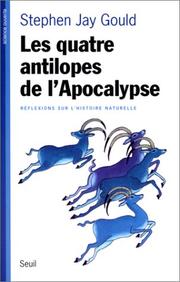
ISBN: 2020285029 9782020285025 Year: 2000 Publisher: Paris : Editions du Seuil,
Abstract | Keywords | Export | Availability | Bookmark
 Loading...
Loading...Choose an application
- Reference Manager
- EndNote
- RefWorks (Direct export to RefWorks)
Ce nouveau recueil des chroniques de S. Jay Gould comprend des essais relatifs à la théorie de l'évolution et aux idées propres à l'auteur dans ce domaine. D'autres articles traitent de l'histoire des sciences et de l'astronomie. Les innovations se situent dans les textes consacrés à "la littérature et la science" et ceux traitant des muséums.
Evolution (Biology) --- Biology --- Evolution --- Natural history --- Evolution (Biologie) --- Biologie --- Sciences naturelles --- Philosophy --- Philosophie --- Natural History --- Biological Evolution --- Evolution, Biological --- Sociobiology --- History, Natural --- Animal evolution --- Animals --- Biological evolution --- Darwinism --- Evolutionary biology --- Evolutionary science --- Origin of species --- Biological fitness --- Homoplasy --- Natural selection --- Phylogeny --- Natural science --- Physiophilosophy --- Science
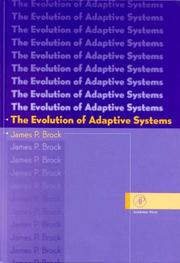
ISBN: 0121347400 9780080542461 0080542468 1282285025 9781282285026 9786612285028 6612285028 9780121347406 Year: 2000 Publisher: San Diego, Calif. Academic
Abstract | Keywords | Export | Availability | Bookmark
 Loading...
Loading...Choose an application
- Reference Manager
- EndNote
- RefWorks (Direct export to RefWorks)
The data of evolutionary biology have changed in a very radical way in recent years, the most significant input to this revolution being the advances made in developmental genetics. Another recent development is a noticeable shift away from extreme specialization in evolutionary biology. In this, we are perhaps to be reminded of George Gaylord Simpson's comments: ""evolution is an incredibly complex but at the same time integrated and unitary process."" The main objective of this book is to illustrate how natural adaptive systems evolve as a unity--with the particular objective of identifying
Biomathematics. Biometry. Biostatistics --- Evolution. Phylogeny --- General ecology and biosociology --- Adaptation (Biology). --- Adaptation (Biology) --- Evolution (Biology) --- Animal evolution --- Animals --- Biological evolution --- Darwinism --- Evolutionary biology --- Evolutionary science --- Origin of species --- Biology --- Evolution --- Biological fitness --- Homoplasy --- Natural selection --- Phylogeny --- Environmental adaptation --- Adaptation, Environmental --- Self-organizing systems --- Variation (Biology) --- Genetics
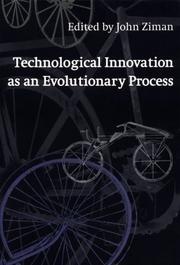
ISBN: 0521623618 Year: 2000 Publisher: Cambridge Cambridge University press
Abstract | Keywords | Export | Availability | Bookmark
 Loading...
Loading...Choose an application
- Reference Manager
- EndNote
- RefWorks (Direct export to RefWorks)
Technological innovations --- Evolution (Biology) --- Innovations --- Evolution (Biologie) --- Social aspects. --- Aspect social --- -#VCV monografie 2000 --- Breakthroughs, Technological --- Innovations, Industrial --- Innovations, Technological --- Technical innovations --- Technological breakthroughs --- Technological change --- Creative ability in technology --- Inventions --- Domestication of technology --- Innovation relay centers --- Research, Industrial --- Technology transfer --- Animal evolution --- Animals --- Biological evolution --- Darwinism --- Evolutionary biology --- Evolutionary science --- Origin of species --- Biology --- Evolution --- Biological fitness --- Homoplasy --- Natural selection --- Phylogeny --- Social aspects --- Evolution (Biology). --- #VCV monografie 2000
| Listing 1 - 10 of 16 | << page >> |
Sort by
|

 Search
Search Feedback
Feedback About UniCat
About UniCat  Help
Help News
News